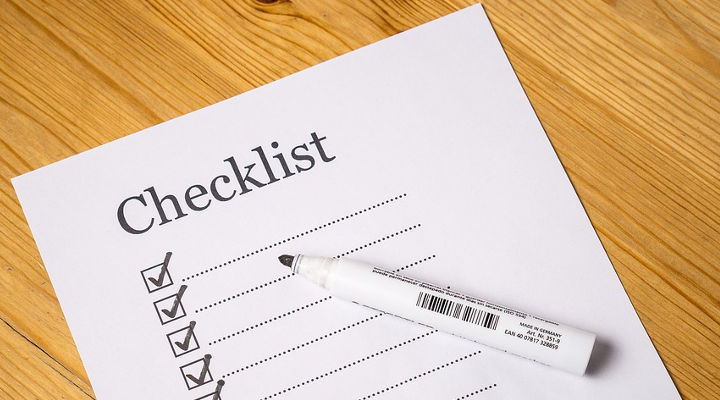10 things to do before you submit your essay
Final draft checklist
You have finished your essay and you think it is ready for submission. Now go through the checklist below, as it should help you spot possible flaws in your essay before submitting it. You are also strongly advised to have the essay ready between 24 and 12 hours before the final submission deadline (ideally, if not earlier), as some of the “things” in this checklist require reading the essay a few times.
Read your essay for references
1. Check you have referenced every idea that is not yours
Your marker will look for your own individual voice and original ideas as well as engagement with secondary sources. You have to be particularly careful in differentiating what you have quoted or paraphrased from somewhere else, and what is actually your own opinion. It also has to appear clear to the marker whether you are paraphrasing a source or quoting directly from it.
2. Check your references are accurate and correct
Whether you choose to use MLA or Chicago (footnotes and bibliography), make sure you are following your referencing style closely. If you are in doubt, you should ask one of your tutors.
Is your bibliography in order?
3. Check you have referenced primary sources as well
This may appear obvious, but make sure you have referenced primary sources too, and the editions you are using. If you are quoting from a play, indicate where in play that particular line is from (eg Act I, Scene II, ll. 123-38); if from a novel, the page number will suffice.
It may be useful to divide your bibliography in “primary” and “secondary” sources, and have the primary sources listed first.
Read your essay for style
4. Edit for grammar and spelling
Look for mistakes in sentence construction, and typos.
5. Edit for syntax and punctuation
Do the sentences flow as you read them? Is the connection between sentences and also that between clauses clear? It may help to read your essay out loud, or only the sentences that look dubious. Your argument will appear much weaker if the logical links between sentences are not clear. If they are not clear to you, they will not be clear to your reader either.
Is a semi-colon really the punctuation mark you need to separate those two clauses?
6. Edit for style and vocabulary
Avoid vague words and broad, banal generalizations, ie ‘Sappho’s poetry is beautiful’, ‘The Odyssey is the most famous book in the history of Western literature’, ‘No woman was free to act in Ancient Rome’. Consider whether the words you have picked at central moments in your argument are the best possible words you could use.
Is the register you have used similar to what you would see in scholarly essays? Check if you have used any colloquial words or phrases, as those are generally not appropriate for a university essay.
Read for argument and structure
7. Edit for structure
Is any paragraph in your essay longer than a page? If so, it may need cutting or re-formulating. Most of the times, long paragraphs read better when they are split into two shorter ones.
8. Check the flow of your argument
Does your argument flow naturally from one paragraph to the next? Is your argument clearly laid out from the beginning? Are you making it clear when you are disagreeing with a source or an interpretation?
9. Re-read your introduction
Your introduction should be neither too short nor too long; ideally, you would aim it to be around 300-500 words (NB: this will depend on the overall length of your essay). Make it sound interesting: your introduction is the first thing your marker will read and it will shape their judgement of your essay as they go on reading it. Of course, an academic essay is not a catchy blog post, but there are many ways in which you can make the first paragraph interesting, such as using a nice quotation from the primary source or one of the secondary sources you have read, or for example engaging actively with the essay question/title. The other thing that the introduction should do is give a sense of what is going to happen in the actual body of your essay: this should not be a summary of your arguments (you do not want to give too much away from the very beginning!), but it should give the marker a good grasp of your essay theme and argument.
10. Re-read your conclusion
Do not think of your conclusion as the moment when you submit your essay in sighs of relief (well, it may be that too!), but rather as the culmination of your argument, when the whole of your essay comes together. It is not enough to write “In conclusion” to conclude. Your conclusion is also not the same as your introduction, although you may want to draw on what you mentioned there and create connections. Similarly as with your introduction, your conclusion is ultimately the last thing your marker will read and you should want to impress them a little. Especially, you want them to feel you have reached a conclusion, rather than simply found one.
- This article is available to download for free as a PDF for use as a personal learning tool or for use in the classroom as a teaching resource: 10 Things To Do Before You Submit Your Essay (PDF
 , 810kb)
, 810kb)

